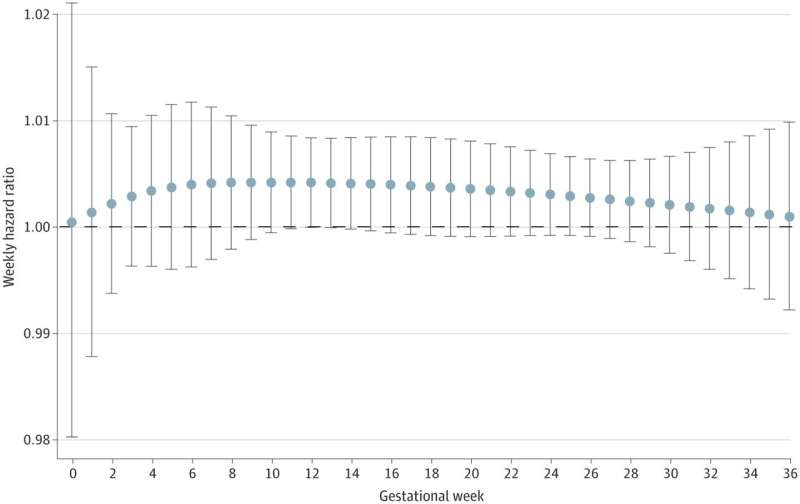July 11, 2024 report
This article has been reviewed according to Science X's editorial process and policies. Editors have highlighted the following attributes while ensuring the content's credibility:
fact-checked
peer-reviewed publication
trusted source
proofread
Association found between prenatal exposure to ambient air pollution and cerebral palsy

A team of environmental health researchers from the Harvard T.H. Chan School of Public Health, Health Canada, the University of Ottawa and McGill University has found an association between prenatal exposure to fine particulate air pollution and increased risk of developing cerebral palsy.
In their study, published in the journal JAMA Network Open, the group analyzed health information in patient databases from hospitals in Ontario, Canada.
Cerebral palsy (CP) is a group of neurological conditions that negatively affect movement and posture. Symptoms do not generally worsen as the child ages, nor do they improve. The condition is almost always caused by damage to the developing fetal brain, prior to birth.
In this new effort, the research team explored the theory that breathing polluted air while pregnant could lead to fetal development of CP. For the study, they focused only on fine particulate air pollution.
The researchers compiled patient information from a database for several hospitals in Ontario, Canada. They focused their study on singleton full-term births that occurred between early 2002 and early 2017. A total of 1,587,935 mother/child pairs were included in the study—3,170 of the babies were diagnosed with CP sometime between birth and 18 years old. The researchers also calculated average fine particulate air pollution exposure levels for all the mothers prior to giving birth.
The research team found a 12% increase in risk of CP for every increase of 2.7 μg/m3 in average fine particulate matter concentrations. The team also looked for associations with ozone and nitrous oxide and found none. They did find that the risk for male babies was slightly higher than for female babies, however. They also found that the exposure risk for CP rose during all weeks of pregnancy, with no time period any riskier than any other.
The research team noted that the levels of exposure they found in mothers of CP babies were not unusual or extreme. None of the mothers included in the study worked in factories or other places where levels were unusually high.
More information: Yu Zhang et al, Prenatal Exposure to Ambient Air Pollution and Cerebral Palsy, JAMA Network Open (2024). DOI: 10.1001/jamanetworkopen.2024.20717
© 2024 Science X Network





















